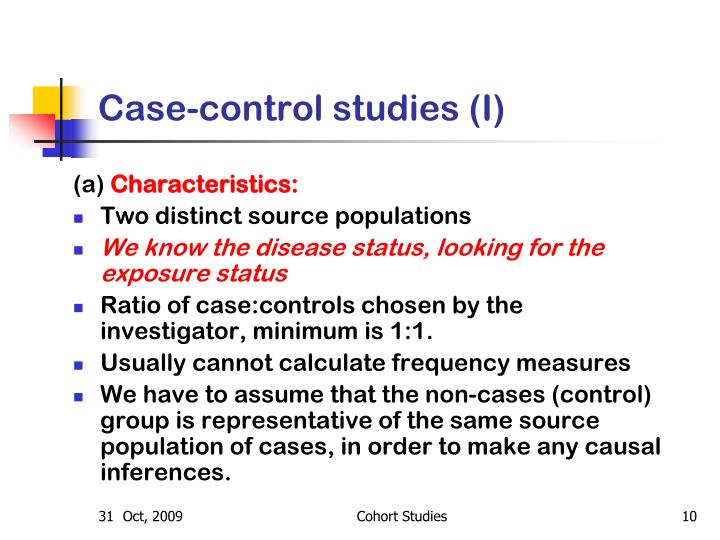

For example, we might match the sex of the control to the sex of the case. In a matched study, we enroll controls based upon some characteristic(s) of the case. The other basic type is a matched case-control study.

Furthermore, the investigator selects the number of cases relative to the number of controls.Ī most critical and often controversial component of a case-control study is the selection of the controls. Also, we have not followed persons at risk to monitor the development of disease. For example, we might enoll patients in a hospital, but we don't really know the size of the general popluation that would have come to the hospital. We have selected cases and controls from a population, often an unknown population. The odds ratio is then (A/C)/(B/D), which simplifies, after cross-multiplication, to (A*D)/(B*C). We calculate the odds of exposure among cases (A/C) and the odds of exposure among controls (B/D). The investigator then determines whether cases and controls were exposed or not exposed to the risk factor. Cases are identified first, then controls. With case-control studies, we essentially work down the columns of the 2 × 2 table. While a case-control study design offers less support for a causation hypothesis than the longer and more expensive cohort design, it does provide stronger evidence than a cross-sectional study.īelow is a 2 × 2 table for case-control data: Exposed However, because these studies collect data after the disease has already occurred, they are considered retrospective, which is a limitation. Previous exposure status is subsequently determined for each case and control. Case-control studies begin by enrolling persons based upon their current disease status. The approach for a case-control study is straightforward. Attributable risks may also be calculated.

Case-control studies are useful when epidemiologists investigate an outbreak of a disease because the study design is powerful enough to identify the cause of the outbreak especially when the sample size is small.

The estimate is the odds ratio, which is a good estimate of the relative risk especially when the disease is rare. Case-control study designs are used to estimate the relative risk for a disease from a specific risk factor.


 0 kommentar(er)
0 kommentar(er)
